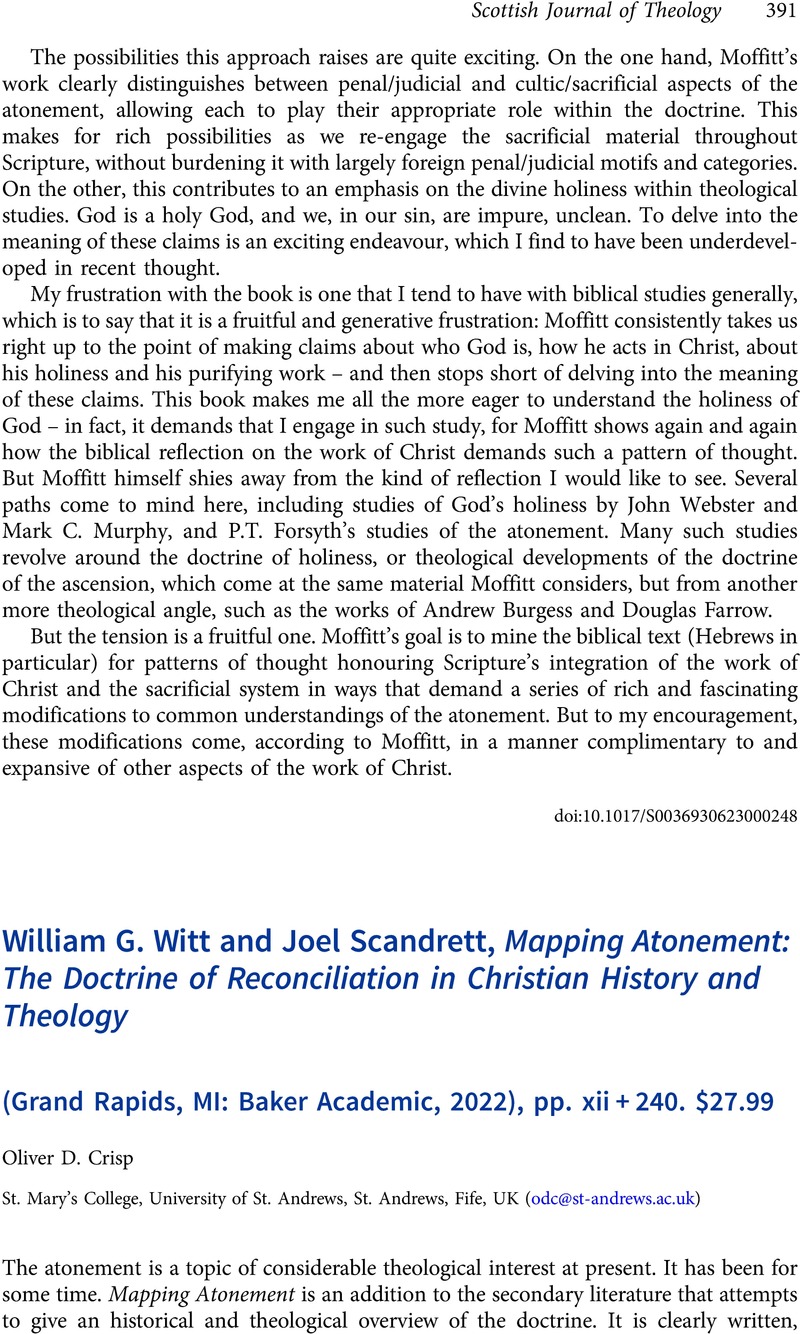No CrossRef data available.
Article contents
William G. Witt and Joel Scandrett, Mapping Atonement: The Doctrine of Reconciliation in Christian History and Theology (Grand Rapids, MI: Baker Academic, 2022), pp. xii + 240. $27.99
Review products
William G. Witt and Joel Scandrett, Mapping Atonement: The Doctrine of Reconciliation in Christian History and Theology (Grand Rapids, MI: Baker Academic, 2022), pp. xii + 240. $27.99
Published online by Cambridge University Press: 17 July 2023
Abstract
An abstract is not available for this content so a preview has been provided. Please use the Get access link above for information on how to access this content.

- Type
- Book Review
- Information
- Copyright
- Copyright © The Author(s), 2023. Published by Cambridge University Press



